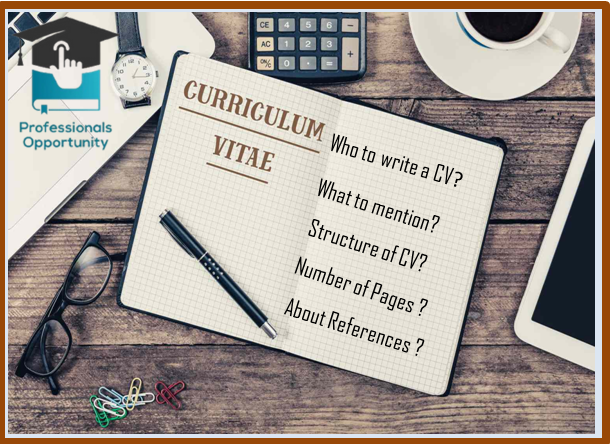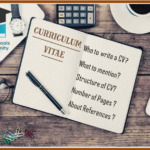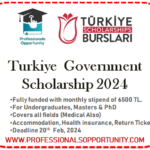
How to write a CV in 2024 ?
Introduction:
Writing a CV can be a daunting task, but it doesn’t need to be. With the right structure and content, your CV can be a powerful document that showcases your relevant experience and qualifications in the best possible light. I’ve written and reviewed dozens of CVs over the years, so I’ve seen what works and what doesn’t when it comes to standing out from other candidates.
Let’s get started!
The Structure of Your CV:
The first thing to focus on is the structure and overall layout of your CV. You want something that is easy for recruiters to scan so they can quickly see your most relevant information. Here are some tips for structuring your CV:
- Use a simple, clean font like Arial, Calibri or Times New Roman in a size between 10-12 points. Sans serif fonts like these are easy to read on screen or in print.
- Keep aspects like colours, formatting, images etc to a minimum. Subtle accents are fine, but you don’t want anything flashy or distracting. Clean and professional is best.
- Limit your CV to 2 pages maximum. You can always expand on your qualifications in a cover letter or interview, but recruiters don’t want to pore over lengthy CVs.
- Organise content in reverse chronological order with your most recent experiences first. This allows recruiters to see your progression over time.
- Include clear section headings for areas like contact details, work experience, education, skills etc. This provides an easy structure to follow.
- Customise the ordering of sections based on what’s most relevant for the role. For example, put skills or achievements above education if they directly relate to the job.
So in summary, opt for a simple, easy to scan 2 page max layout with clear section headings ordered to highlight your strengths. Now let’s dive into the specific content sections you should include.
Contact Details:
This is a no-brainer but you’d be surprised how many CVs skip over or bury important contact details. Make sure your contact section is prominently placed at the top and includes:
- Your full name
- Phone number (make sure your voicemail is professional)
- Email address (opt for a simple professional one like yourname@gmail.com)
- LinkedIn URL or website (if relevant)
- Address (you can skip this for privacy if applying online)
Having this key info readily available allows recruiters to easily reach out to you should your CV pique their interest. You want to make connecting with you as seamless as possible.
Work Experience:
List your most relevant jobs here in reverse chronological order including:
- Job title
- Company name
- City & country of employment
- Dates employed (Month, Year – Month, Year)
Then, provide 2-4 bullet points per role highlighting your key achievements, responsibilities and impacts:
- Increased sales by 20% through implementing new marketing strategies
- Managed a team of 5 junior account managers, training and overseeing daily operations
- Coordinated projects from initial scoping through to delivery and handover
Quantify your achievements where possible with stats, percentages or metrics. Recruiters want to know the tangible impact you made in previous roles.
Education
List the most applicable degrees, diplomas, certificates with:
- Name of qualification
- Subject/major area of study
- College/university name
- Location
- Graduation date or expected graduation date
You can skip your high school if you’ve gained other post-secondary education. List education in reverse chronological order and supplement with any relevant coursework if needed.
Skills:
This should showcase both technical/hard skills along with soft/behavioural skills. Examples:
- Software: Excel, Adobe Suite, Salesforce CRM
- Languages: French (conversational), Spanish (basic)
- Communication: Strong written and verbal communication abilities
- Problem Solving: Resourceful troubleshooter, able to determine solutions under pressure
Tailor your skills to the position requirements whenever possible. You can highlight up to 8-10 of your most suitable abilities here.
Achievements & Certifications:
Pop this section in if you’ve achieved noteworthy milestones like:
- Awards or accolades from previous roles
- Completion of rigorous training/certification programs
- Special projects you spearheaded with tangible outcomes
- Leadership roles held in student groups or community initiatives
Employers like to see evidence you’ve gone above and beyond. 1-2 well explained bullet points suffice for each achievement.
References:
Most CVs end with a simple “References available upon request” statement unless the employer specifically asks to see them. Leave this section last to avoid crowding your CV.
Additional Content:
Some other optional areas you may want to include depending on relevance are:
- Professional summary: A 2-3 sentence overview of your background, qualifications and career goals located under your contact details
- Interests: A short 2-3 item list can help showcase your personality
- Volunteer work: Non-profit or community initiatives are great to demonstrate passions/soft skills
- Publications/presentations: Scholarly articles, conference speaking, case studies etc.
- Course projects: Relevant capstone or group projects from university
This covers the primary content areas to focus on for a strong CV structure. The key is selecting only the most pertinent details tailored to the job you’re applying for. Now let’s discuss some additional tips.

Additional CV Writing Tips:
Here are some final tips to keep in mind as you draft and refine your CV:
- Tailor your CV for each application – While you’ll have a master CV template, customise wording and ordering of sections based on specific job requirements. Research the company too for synergies to highlight.
- Use keywords strategically – Scan job postings for in-demand skills and weave these keywords naturally throughout your CV content and headings when possible. Applicant tracking systems often screen for keywords.
- Ask for feedback – Have 2-3 career professionals or a trusted friend review your CV with a critical eye. A fresh perspective catches things you may have missed. Implement suggested changes.
- Proofread meticulously – Typos, errors or inconsistent formatting come across as sloppy. Read your CV aloud, have software check it and ask others to proof as well before submitting.
- Keep it updated – Don’t let your CV collect digital dust. Review and tweak it regularly adding any new experiences, courses or achievements as you gain them over time.
- Tailor your cover letter too – Your cover letter should directly reference why you specifically are a great match based on specifics from the job posting and your background. This pairs well with your individualised CV.
- Consider visual appeal – While essentials only, a visually balanced layout and subtle formatting uplifts your CV’s professional look and makes it inviting to read.
- Save as a PDF – Many ATS systems can’t read anything other than standard PDFs properly so save and submit your final CV in this universal format.
- Always be selling yourself confidently – Your CV is the first impression, so convey your strengths, qualifications and passion for the role in a warm, enthusiastic tone throughout.
I hope these tips have been helpful for structuring a professional, customised CV that will help you stand out from other candidates. The key things to remember are focusing on the job requirements, tailoring your content to each application, and structuring everything clearly based on the STAR method to highlight your relevant qualifications and achievements.
Feel free to reach out if you need any help applying these suggestions or have additional CV questions. Wishing you the very best in your job search!
Tips for Different Career Stages:
The tips I’ve outlined so far relate to creating a standard professional CV. However, the needs and challenges differ depending on your career stage. Let me offer some customised advice based on where you’re at:
Recent Graduates:
- Highlight applicable coursework, projects and presentations to supplement lack of work experience
- Include part-time or volunteer roles to demonstrate transferable skills
- Ask professors or supervisors for references who can speak to your potential
- Join networking groups to expand your career-focused connections
Career Changers:
- Explain the rationale and career direction behind your desired change concisely and positively
- Emphasise transferable hard and soft skills from your previous industry
- Volumes of past experience aren’t necessary – focus on most pertinent 2-3 roles
- Consider pursuing short courses to gain initial qualifications for new field
Mid-Career Professionals:
- Maintain an up-to-date and cohesive story of your progression through experiences and accomplishments
- Leverage results-driven bullet points to showcase increasing leadership and contributions
- Seek out mentors and additional training to expand expertise in growing areas of focus
- Highlight any other credentials, certifications or additional education acquired
Returning to Work:
- Succinctly address but do not dwell on career gaps from breaks such as parenting
- Leverage volunteer roles during hiatus to maintain recent experience and networks
- Pursue brief refresher courses if field has advanced significantly during time off
- Emphasise that maintaining your CV is an ongoing process. Career paths are never static, so keep your CV updated regularly as you gain new experiences and accomplishments.
- Reinforce the importance of proofreading and having others review your CV. Hiring managers only have a few seconds to review each one, so typos or errors can be a dealbreaker.
- Encourage tailoring cover letters and thank you notes to each application as well. A strong accompanying letter helps bring your CV to life and shows how you match specific opportunities.
- Suggest keeping a master list of your qualifications, projects, achievements handy while customising CVs. This makes the tailoring process quicker and more thorough.
Conclusion:
In conclusion, taking the time to thoughtfully craft a professional, tailored CV is one of the most important things you can do for your job search. A well-written CV that highlights your relevant qualifications and achievements in a clear, easy-to-scan format will get your foot in the door with potential employers.
Be sure to focus on keywords from job descriptions, quantify your impact whenever possible, and customise each CV specifically for the role and company you’re applying to. Getting targeted feedback from career professionals and thoroughly proofreading are also crucial steps.
Remember – your CV is not just another document, but rather a marketing tool that allows you to tell your unique professional story and demonstrate why you’d be a strong fit and valuable addition. With the right content and structure, it can open the door to more interviews and help advance your career goals.
I hope the tips covered here have provided a solid foundation and framework for crafting an exemplary CV. Please feel free to contact me if you have any other questions during your job search process. Wishing you the very best as you work to highlight your background and sell yourself to potential employers. With an optimised CV as your ally, your qualifications will really shine through.
FAQs :
How long should my CV be?
As a general rule, your CV should ideally be no longer than two pages. One page is okay for junior candidates but two pages allows for more experienced professionals to include all relevant details. Keep it clear and concise.
What file format should I use?
It’s best to save your CV as a PDF file. This universal format maintains formatting consistency regardless of what device or system views it. Avoid submitting Word documents which can cause formatting issues.
Should I include a photo?
A photo is generally not necessary or recommended on a CV in Western countries. The focus should be on your qualifications rather than appearance. A photo can possibly introduce bias, so it’s best left off in most cases.
How often should I update my CV?
Review and update your CV every 6-12 months and whenever you gain new experiences, qualifications or achievements that make you a stronger candidate. Keeping it current ensures you’re putting your best foot forward for each new opportunity.
Can I use the same CV for every job?
No, you should always customise your CV specific to each job listing by highlighting the experiences and skills most relevant to that role and company. Tailoring it shows potential employers you’ve carefully considered how you’re a great fit.
Should I include references?
It’s standard to state “References available upon request” at the end rather than listing them directly on your CV. This helps keep your CV brief while still giving permission to contact references if interested in learning more about your qualifications and work history.















14 thoughts on “How to write a CV in 2024 ?”